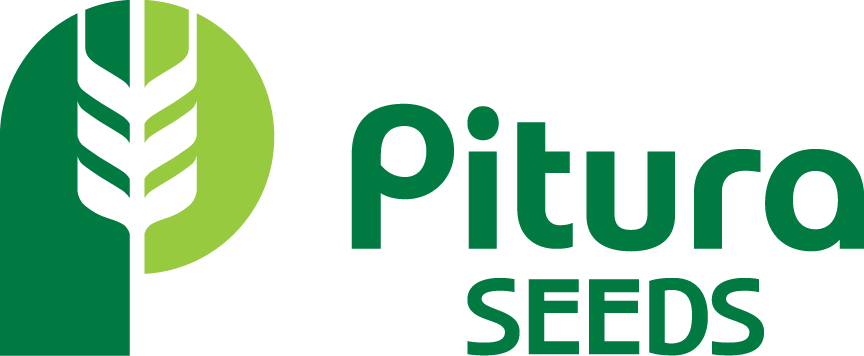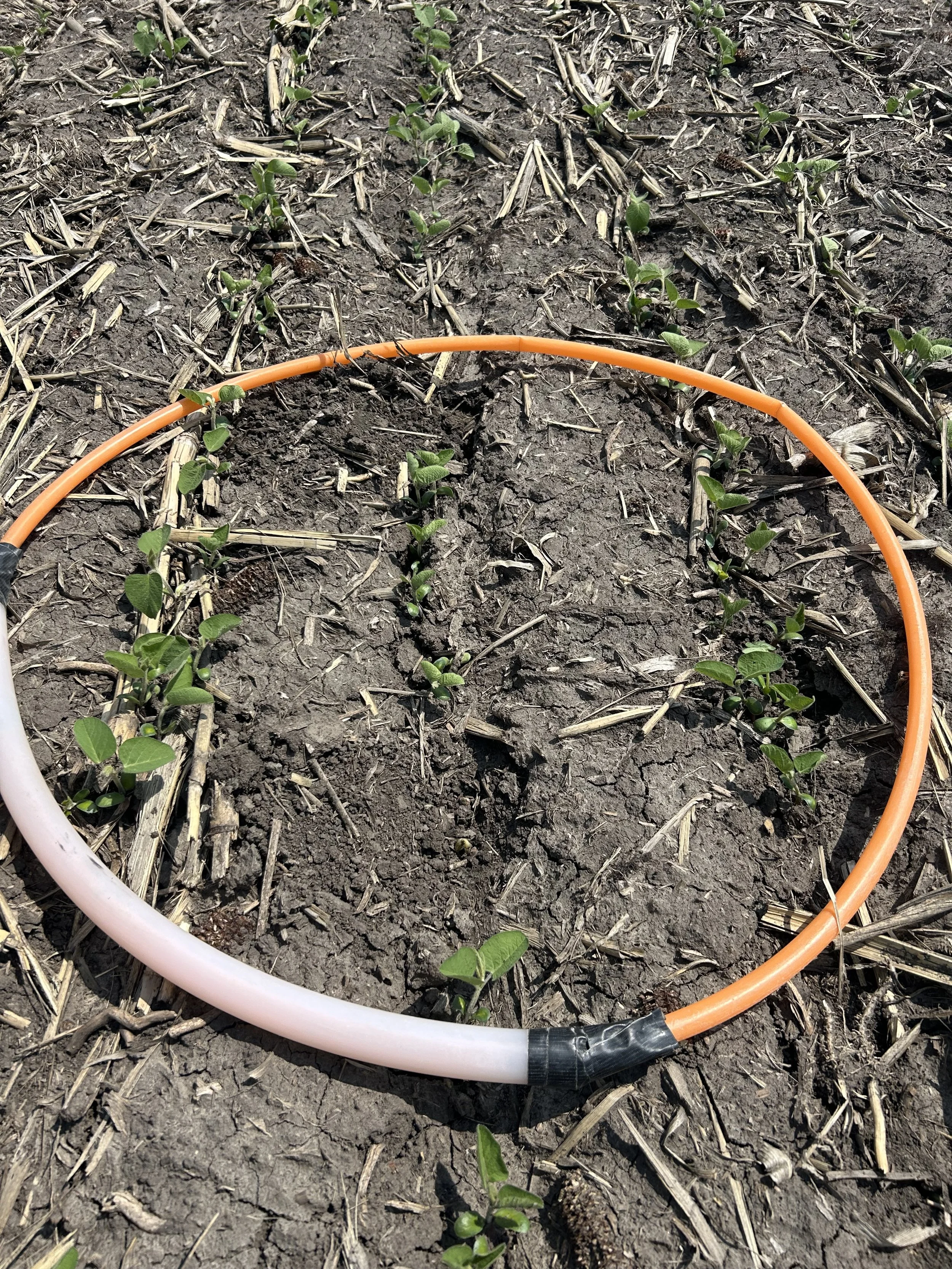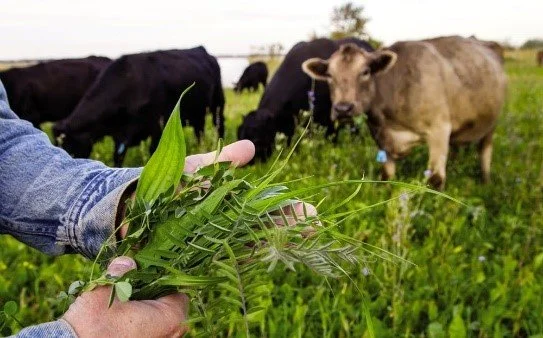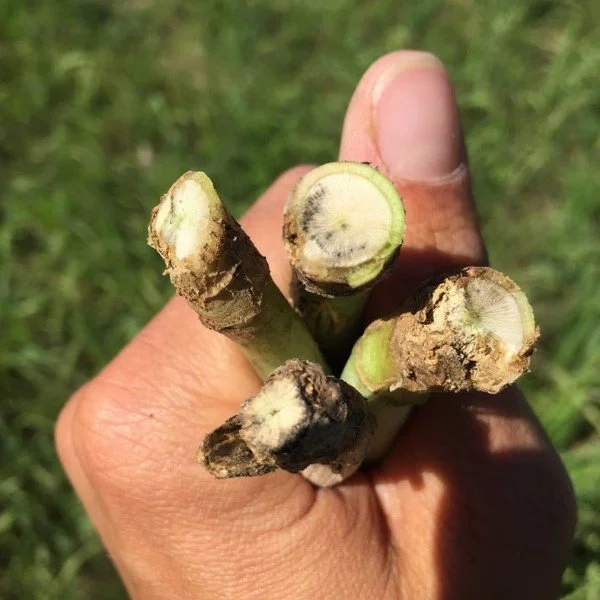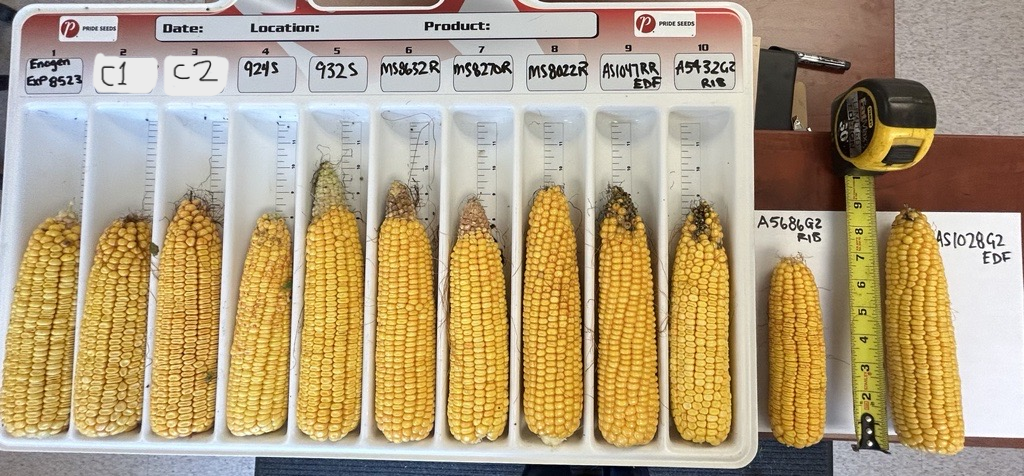Agronomy Articles
Our sales and agronomy team share their experience and local knowledge through these articles - covering everything from seeding tips to in-season management and harvest best practices. These articles are featured in our monthly Seed Perspective newsletter.
This season has delivered impressive canola yields, but growers should not let that overshadow the underlying disease risks from late season infection.
Strong partnerships start at home. With Canadian-focused suppliers like Maizex, DSAG and Pitura Seeds are bringing locally proven corn genetics right to Manitoba fields—backed by trials, demos, and on-farm support.
Wild oat resistance is on the rise in Manitoba. UPL’s herbicide layering trials show how multiple timings and modes of action can boost control and help farmers stay ahead of this challenge.
SY Manness lived up to its “Racehorse” name in 2024, setting a new CWRS yield record on the Pitura Seed Farm at 100.3 bu/acre thanks to ideal growing conditions. While it won’t always be the top performer, its unique genetics make it a powerful yield-chasing option when the season lines up just right.
This article challenges growers to think beyond standard practices and consider integrated strategies for more effective FHB management - exploring how infection timing and weather trends influence disease severity and if current fungicide recommendations are good enough.
Do your soybeans look a little uneven this spring? Mother nature threw us some curveballs that didn’t help with even soybean emergence, but soybeans are resilient so no need to worry.
What are the nutrient losses associated with burning crop residues and what nutrient value is retained on the field in the form of ash?
Are you missing something your crops desperately need? While we focus on macronutrients, vital micronutrients like boron often go unnoticed—yet they play a powerful role in plant health, growth, and yield. Discover why boron might be the hidden key to unlocking your crop’s full potential.
Do you ever wish your agronomist would give you a better answer than “It depends”? Look no further! No service fee required to benefit from this valuable FREE agronomy advice generously shared by several Manitoba Agronomists.
By adjusting for seed size and targeting ideal plant stands, growers can improve variety comparisons, enhance yield potential, and even reduce seed costs.
A follow-up from last month’s Seed Perspective that provides more details about application methods and strategies for growers interested in experimenting with AMS on early-seeded soybeans.
Thinking you'll treat your seed this year? Make sure to think about the features of the seed treatment that will improve your yield and ROI.
In Ontario, the addition of AMS fertilizer on early seeded soybeans has shown yield increases of up to 20 bu/ac. Is the same response possible for Manitoba?
Struggling with unpredictable markets and rising costs? Corn grazing is a good way to lower costs compared to traditional feeding methods. Let's dive into some key factors that help make this form of grazing successful.
Improve moisture retention, reduce erosion, and boost biodiversity with cover crops. Discover simple ways to enhance your soil’s health and productivity year-round.
How do we continue to reduce nitrogen emissions without sacrificing yield? This is the topic that Dr. Mario Tenuta tackled at the Manitoba Agronomists Conference this year. Find out how nitrogen emissions occur, and some of the top strategies he has seen in his research to reduce them.
2025 Articles
2024 Articles
Many post-harvest conversations have posed the question “why didn’t my canola reach it’s full potential?” – Let’s dive into it.
Let's look into ways we can see what is going on under the soil and how our crops are being affected. Soil sampling and tissue testing are great ways to have an insight into what the crop is dealing with throughout the season.
If history repeats itself, protecting cereal seed from seedling diseases in the 2025 season will be more crucial than it has been in the last 9 years.
Based on surveys in 2022, blackleg was detected in 85% of canola fields. Current disease pressure is steadily growing. Understanding management through genetic resistance is more important than ever!
With seeding/planting coming to an end and seed decisions finalized, we can think about how we will further supplement our crop with its nutrient’s needs. Find out how split application in-season can increase your nitrogen on corn.
When striving to increase grain protein content in our spring wheat crops, how much influence does your management have on grain protein yield?
Research suggests that as many as 85% of grain farmers price their grain in the bottom third of the market. Is that true? Grain marketing is a challenge on many farms, how can you get better at it, what are the best resources and can you really trust your grain buyer?
With seeding potentially just around the corner, the topic of crop emergence must be brought up. The rate at which the seeds emerge after seeding, although far from harvest, can affect the yield of the crop significantly.
Seems like meteorologists have found a trustworthy crystal ball for forecasting a wetter than average summer in 2024! This article explains the weather phenomenon that consistently affects North American weather in a historically predictable way.
Syngenta’s traited corn called Enogen, helps convert starch to sugar more effectively than traditional corn silage, providing more readily available energy to beef and dairy. Read more about DSAG’S trial results, and why Enogen could be a great fit on your farm.
Dr. Barney Geddes from the Department of Microbiological Sciences at NDSU presented at the MAC 2023 to discuss his lab’s research and to pose the question of Effective vs Competitive Rhizobium. This article summarizes his presentation and its application in Manitoba.
Artificial Intelligence is all the rage these days but what does it actually mean for agriculture? ZoomAgri has developed machine learning technology that can determine seed varieties and grade for a fraction of the cost and quicker than our current testing practices. Click here to learn how it works.
While most of our growing season was dry this year, we did see an increase in PRR after one good rain shower, particularly in one field. So, what would have caused an increase in PRR on that field on the farm?
We’ve started seeing some Green Cloverworms at economical levels in soybean fields around the area. Some producers in the area are taking action to protect their soybean yield. This is a new pest for me, so read on to find out what I’ve learned.
As crops start to come off, fertility planning for next year should be in the back of your mind. The environmental conditions of the 2023 growing season already have me thinking towards the impact it will have on 2024 crop year. This article digs into why field-specific fertility planning is practical after a year with extremely variable rain patterns.
As we continue to battle herbicide resistance, pre emerge products are starting to become an important component of our integrated weed management (IWM) plan. Read on to learn of the benefits of these products, and important factors to consider when applying them.
When should farmers inoculate? Should they inoculate at all? How do we maximize the benefits of the inoculant? Can we enable nitrogen fixation in cereal crops? These are the questions that Dr. Barney Geddes addressed at MAC this past year.
Majority of MB wheat fields haven’t yet been impacted by the Wheat Midge pest. Key word: yet. AB and SK have experienced significant damage to the grade and yield of their wheat crops due to wheat midge infestations. Wheat midge can thrive wherever wheat is grown – the migration into MB is inevitable.
A panel of experts gave us the details on 3 diseases of concern at the Manitoba Agronomists Conference in 2022. Find out how to identify and manage crown rust, verticillium stripe and Aphanomyces root rot.
2023 Articles
This year marks the third year of subsoiling trials on Pitura Seeds Farm. While subsoiling may not be a fit for every farm, it has certainly shown its value in our heavy clay soils. Find out what impacts subsoiling had on crop growth, water infiltration and yield this season.
After years of dry conditions, we were finally able to perform a fungicide trial! We put Miravis Ace and Prosaro XTR to the test. Read on to see how they stacked up against one another in both yield, quality and harvestability.
New for 2023, AAC Hodge VB and AAC Hockley Wheat. View the presentations from our launch meeting.
The spring of 2022 started out with a lot of unknowns and worries about the upcoming crop but growing conditions were optimal for soybean yields and quality. Find out what Pitura Seeds and their contract growers do to maximize quality ahead of the 2023 growing season.
Fall 2022 has shown an increase in Verticillium Stripe infected canola fields. Diagnosing Verticillium stripe in your field can be difficult because the disease can be inconsistent in how it presents itself. This article outlines some tips for identification so that you can get out in the field, correctly identify canola diseases, and match your management plans accordingly.
With most winter wheat, open pollinated fall rye and hybrid rye in the bin, the winter cereal report is here! Check out how each of the varieties faired along with new and upcoming varieties hitting the market.
Desiccation can be a useful tool for harvest management. But it’s important to match the product with the conditions of each field. This article outlines the activity of different desiccation herbicides and the scenarios in which each product will be most effective
Late seeded soybeans - the hot topic of discussion and considerations leading up to that decision.
The results are in from resampling 3 fields and our findings have changed since fall 2021.
Find out what NEW and existing trials we are planning on the Pitura Farm this growing season! These are the trials we are the most curious about, the trials that we will be updating you on throughout the growing season, and sharing results at harvest time. Subsoiling, protein mapping with Harvest Lab 3000, cover crops and much more.
Are you trying anything new on your farm? We want to hear from you!
Canola seed with Pelta™ technology has a uniform seed size so growers can purchase exactly what they need to meet target plant populations and maximize yield.
View Shaun Haney’s presentation from the ALL AG HOT STOVE on 3 Key Things To Watch In Agriculture Right Now
Fuel, another F-word to add to the list of exceedingly high costs on-farm. This article highlights considerations that we are hearing from farmers and market reports to gain an added perspective.
Do you know how much snow is out in your field? Follow along as we measure the snow catch and water equivalents in our soybean & canola stubble field as well as our oat cover crop.
With the drought like conditions we experienced in 2021, we have seen a decrease in seed size among all crops processed. Discover how changes in TKW, seed size and germination rates can alter the amount of seed you put in the ground.
Some fields are showing up with with high Nitrogen levels. This is what we have learned from the past.
